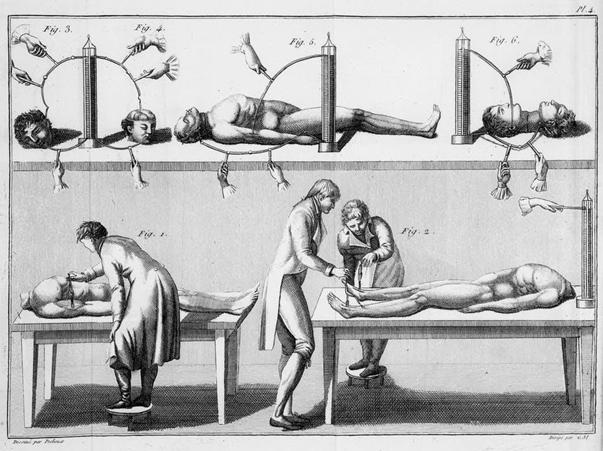The Shocking Story Behind Frankenstein
Feb 22, 2021 | 2 min read

Feb 22, 2021 | 2 min read

The early 1800s was a curious time. The Napoleonic Wars dominated the European political landscape, transatlantic slave trade was
preparing to reach an all-time high and President John Adams became the first president to occupy the White House. Morphine was
successfully isolated from opium. Romanticism had started to gain traction. Ludwig van Beethoven was particularly active; his
Symphony No. 1 premiered in Austria, followed shortly by the completion of Fidelio and Symphony No. 3 ‘Eroica’. Over in Italy,
Alessandro Volta constructed a voltaic pile for the first time and Giovanni Aldini succeeded his uncle, Luigi Galvani, as professor
of physics at the University of Bologna.
During this period, Europe was anxious about the nature of death; this anxiety was reflected in the literary works like Mary
Shelley’s Frankenstein. Over in Great Britain, from 1752 to 1832, the punishment for anyone convicted of murder was not only death
by hanging but also the subsequent usage of their bodies by the College of Surgeons for purposes of anatomisation and dissection.
The dissections carried out by the College of Surgeons were theatrically performed at public events. In 1803, the College invited
Professor Aldini to carry out Galvanic experiments on corpses of prisoners at Newgate, London. The young professor had some
specific requirements: the bodies had to be of people who had died recently, for he believed their ‘vital powers’ would still be
intact; the bodies should not be of those who had died of disease, for they might have ‘humours’ that would resist his
experiments. Due to the rather high rates of capital crime during the time, such bodies were not in short supply. George Foster
had recently been convicted and subsequently hanged for the murder of his wife and children; his corpse, which had been left
hanging for an hour at 2 degrees below freezing, would be the first to be subjected to Aldini’s electrical probing.
In an experiment that left quite an impression on the public at the time, with all their anxiety surrounding death, Aldini
attached electrodes to various parts of the late Mr Foster’s body. Upon attaching one electrode to the mouth and another to the
ear, Aldini got the corpse’s jaw to quiver, face to contort and left eye to actually open. Over the span of several hours, Aldini
conducted various experiments on the body, attaching the electrodes to different pairs of anatomical locations. Describing one such
experiment, Aldini writes: “The conductors being applied to the ear, and to the rectum, excited in the muscles contractions much
stronger than in the preceding experiments. The action even of those muscles furthest distant from the points of contact with the
arc was so much increased as almost to give an appearance of re-animation.” These experiments left quite the impression on the
eyes of the public. In fact, in her introduction to the 1831 edition of Frankenstein, Mary Shelly writes, “Perhaps a corpse would
be re-animated; galvanism had given a token of such things: perhaps the component parts of a creature might be manufactured,
brought together, and endued with vital warmth.”

Figure 1. An Illustration of Some of Aldini's Experiments
About the experiments, Aldini says, “Being favoured with the assistance and support of gentlemen eminently well skilled in the art of dissection, I proposed, when the body should be opened, to perform some new experiments which I never before attempted, and to confirm others which I had made above a year ago on the bodies of two robbers decapitated at Bologna. To enlarge on the utility of such research, or to point out the advantages which may result from them, is not my object at present. I shall here only observe, that as the bodies of valuable members of society are often found under similar circumstances, and with the same symptoms as those observed on executed criminals; by subjecting the latter to proper experiments, some speedier and more efficacious means than any hitherto known, of giving relief in such cases, may, perhaps, be discovered.” You can read more about Aldini’s experiments involving galvanism here.